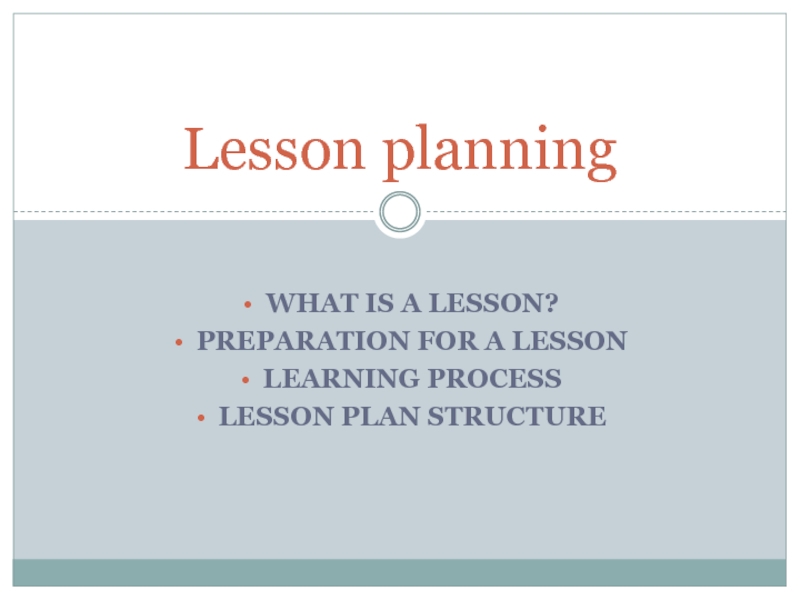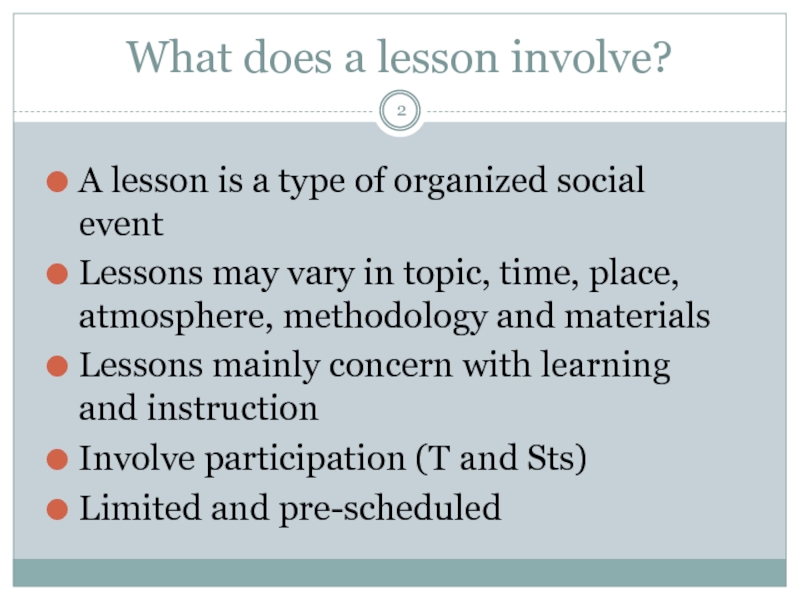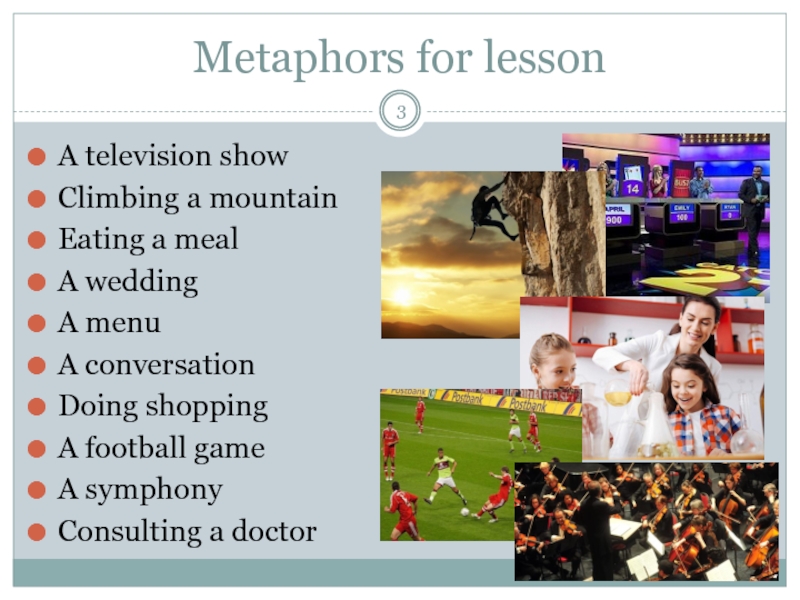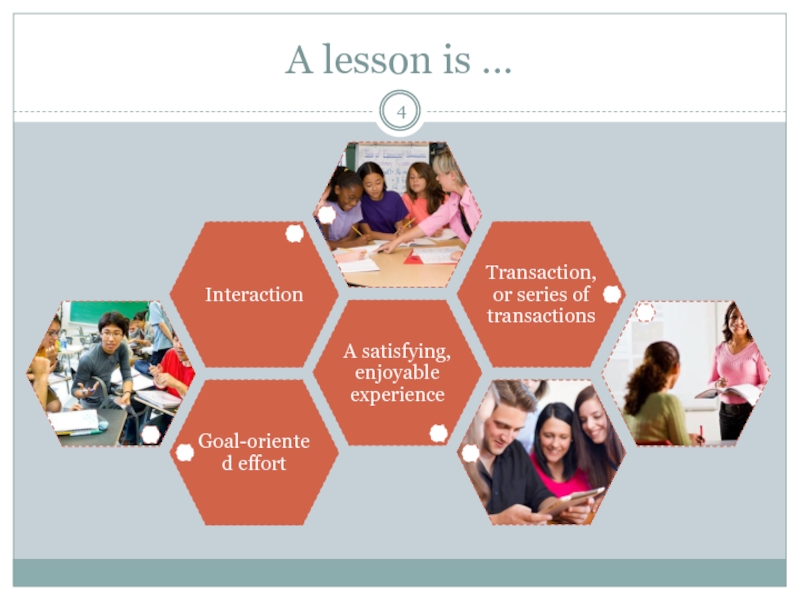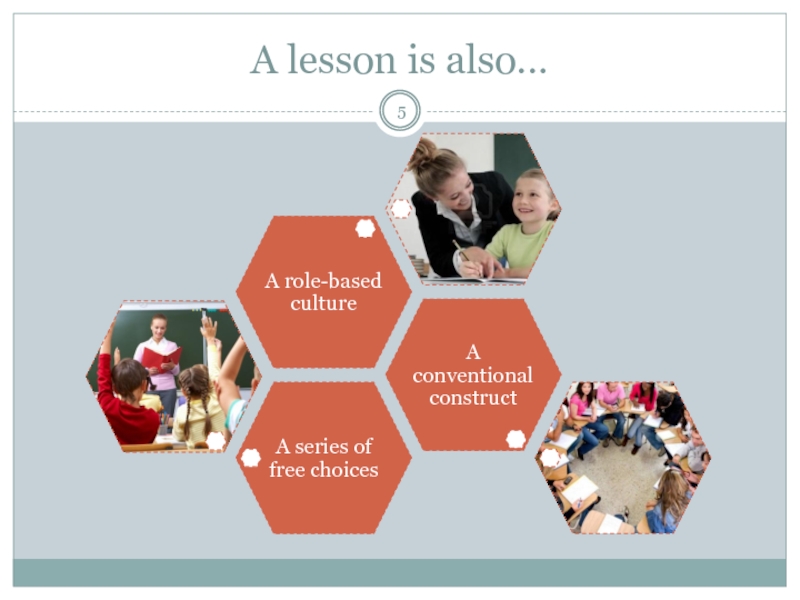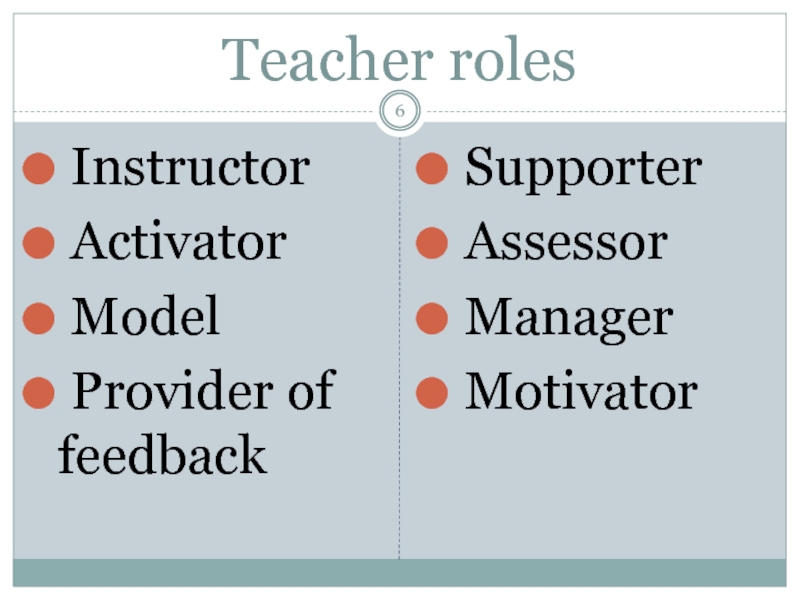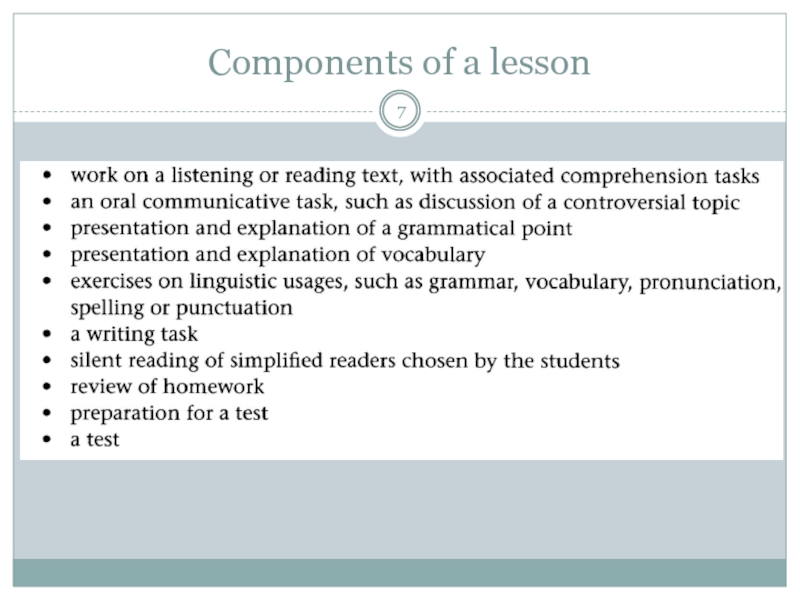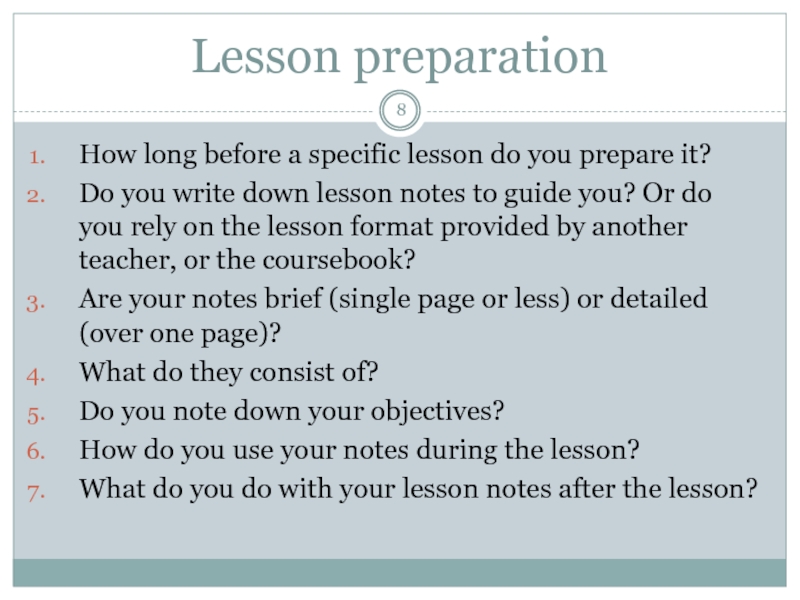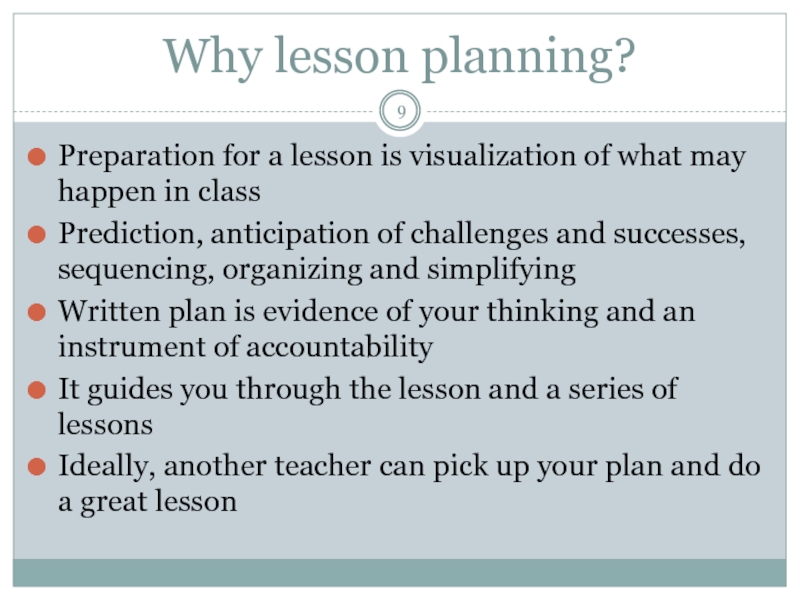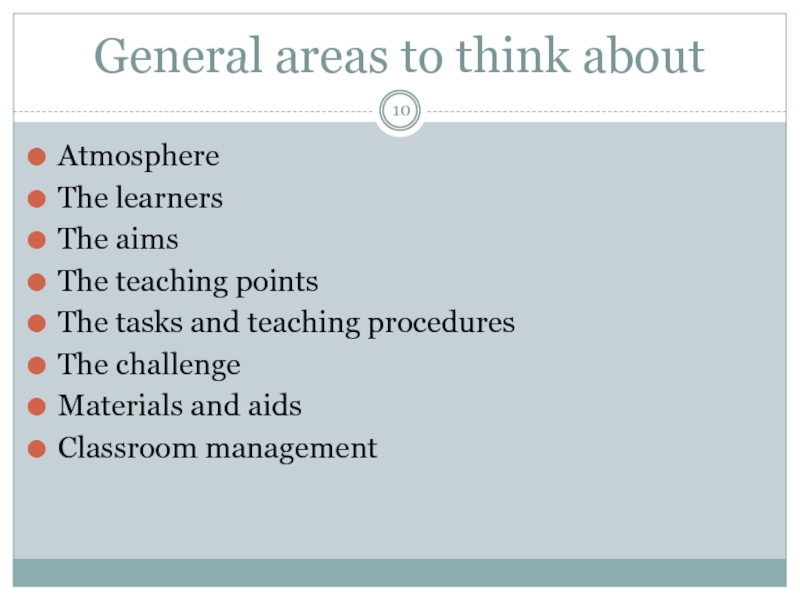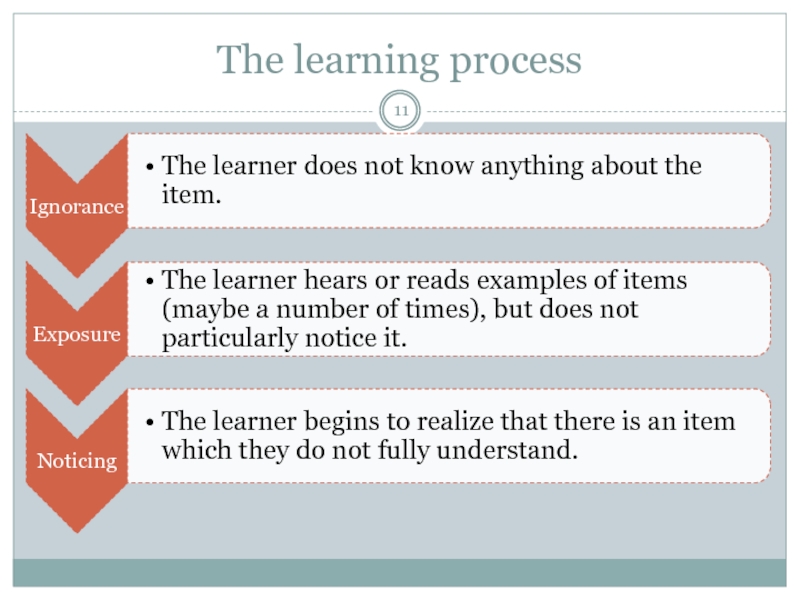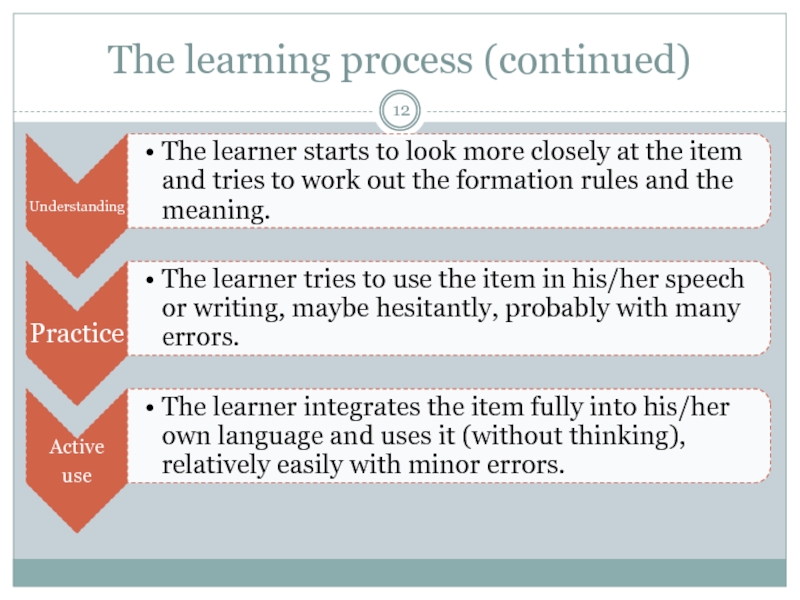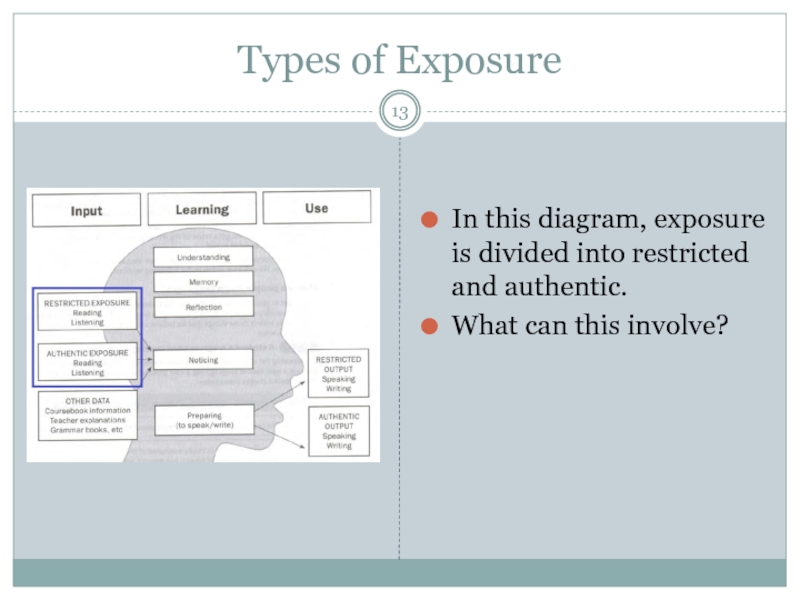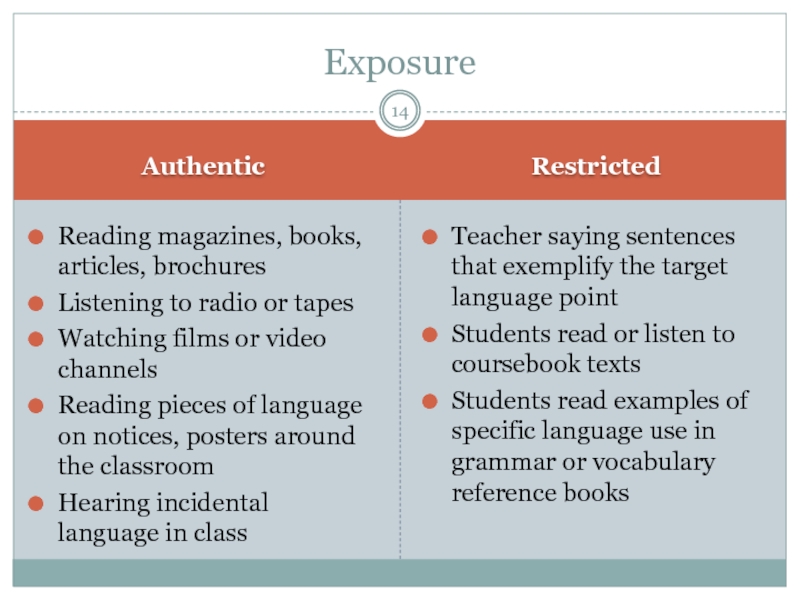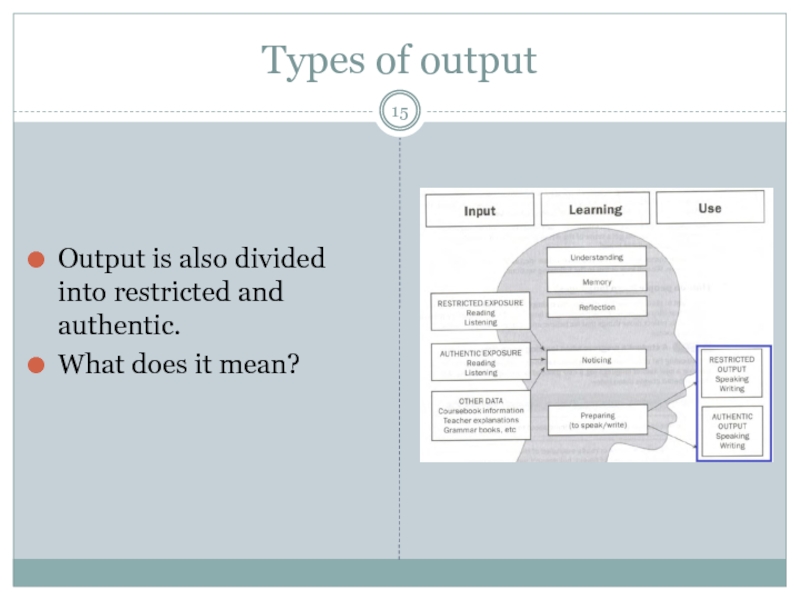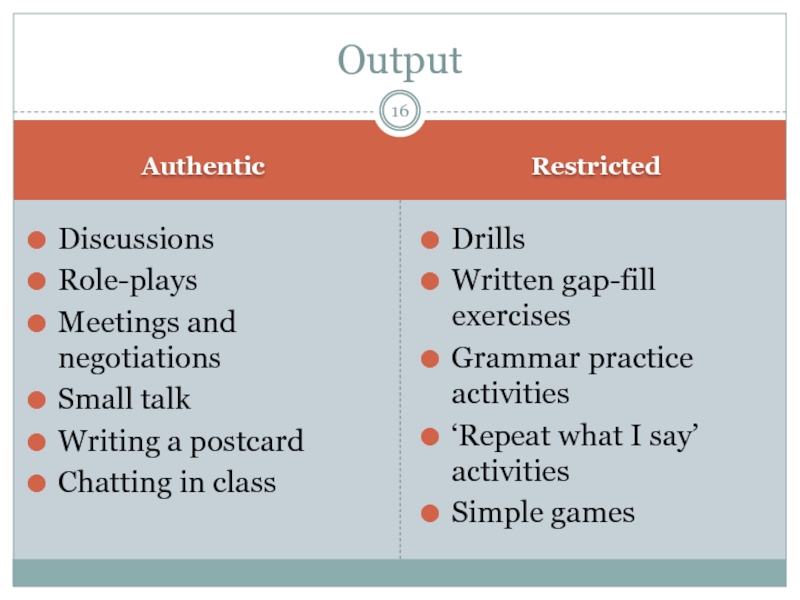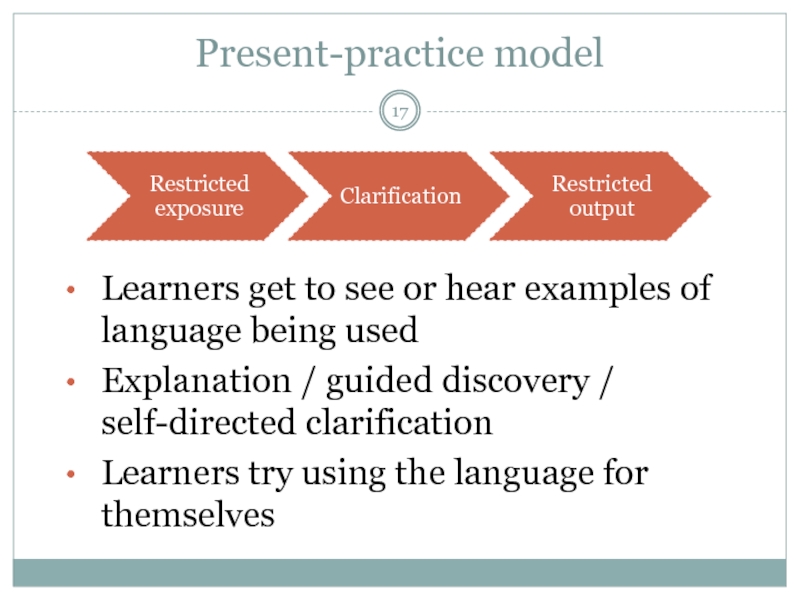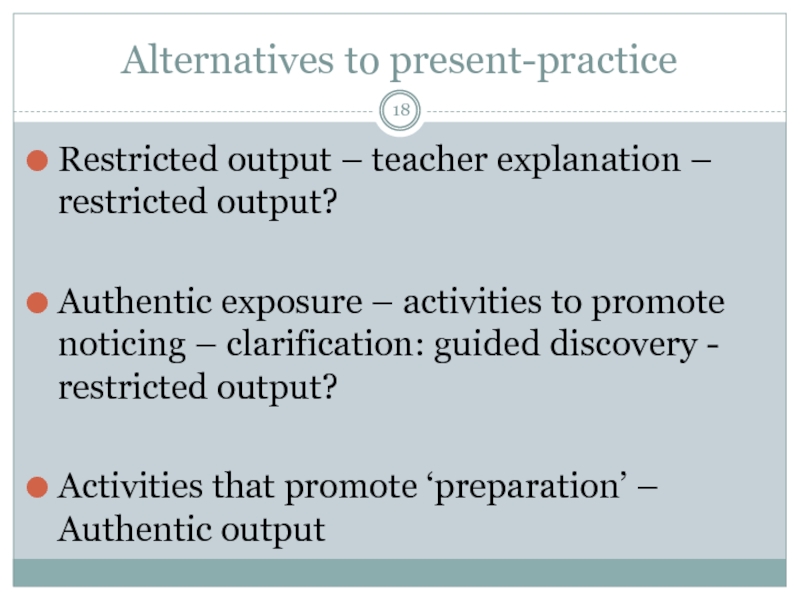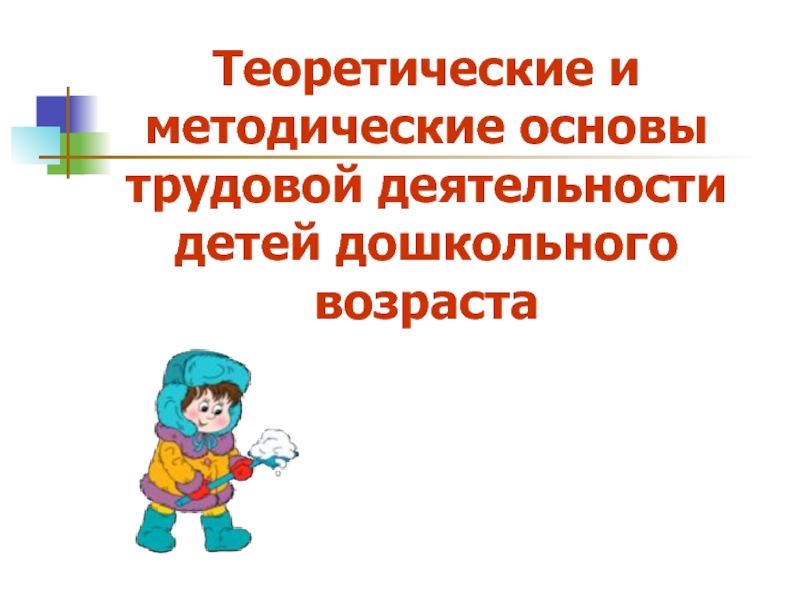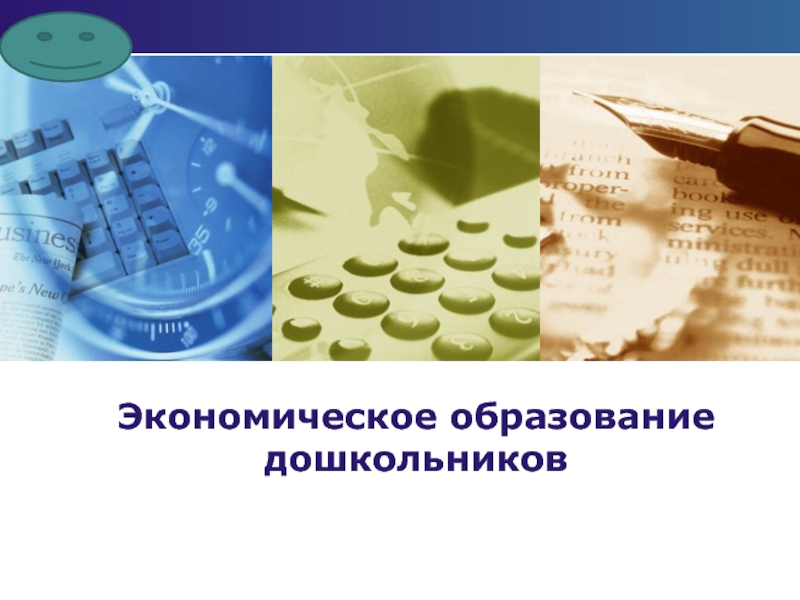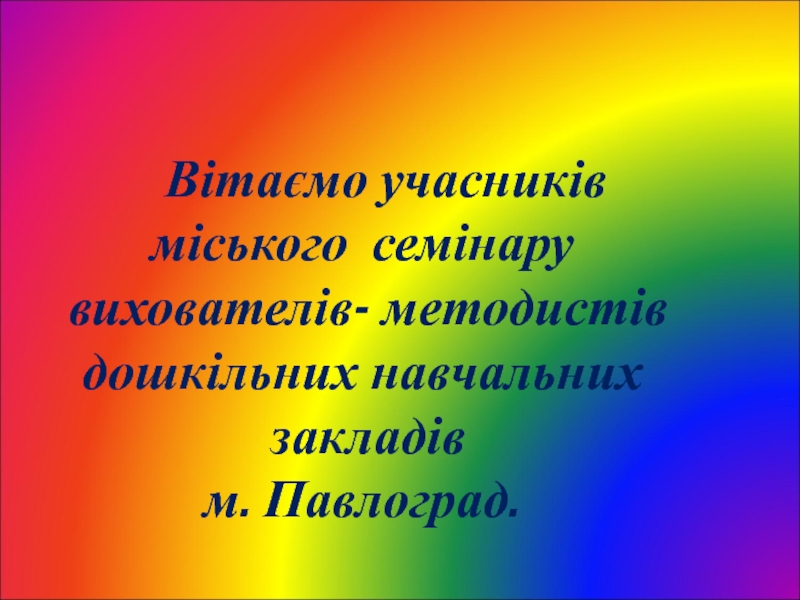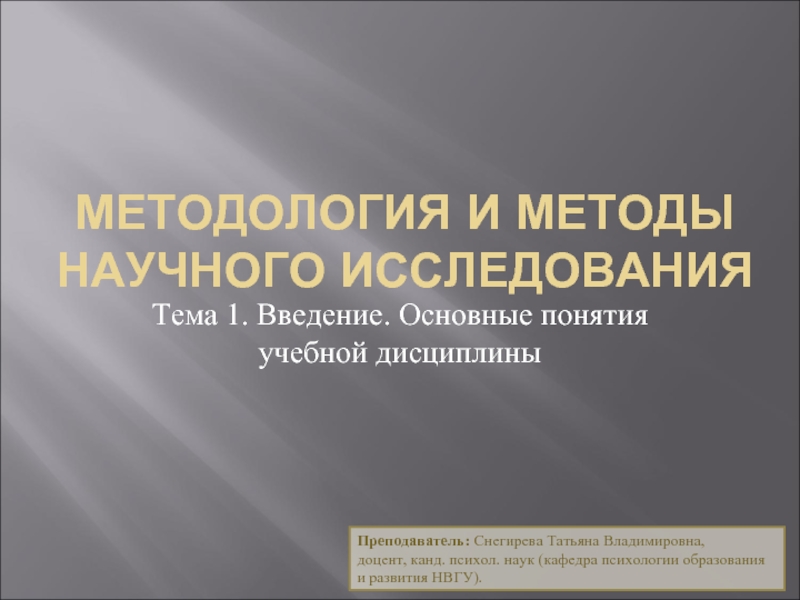- Главная
- Разное
- Дизайн
- Бизнес и предпринимательство
- Аналитика
- Образование
- Развлечения
- Красота и здоровье
- Финансы
- Государство
- Путешествия
- Спорт
- Недвижимость
- Армия
- Графика
- Культурология
- Еда и кулинария
- Лингвистика
- Английский язык
- Астрономия
- Алгебра
- Биология
- География
- Детские презентации
- Информатика
- История
- Литература
- Маркетинг
- Математика
- Медицина
- Менеджмент
- Музыка
- МХК
- Немецкий язык
- ОБЖ
- Обществознание
- Окружающий мир
- Педагогика
- Русский язык
- Технология
- Физика
- Философия
- Химия
- Шаблоны, картинки для презентаций
- Экология
- Экономика
- Юриспруденция
Lesson planning презентация
Содержание
- 1. Lesson planning
- 2. What does a lesson involve? A lesson
- 3. Metaphors for lesson A television show Climbing
- 4. A lesson is …
- 5. A lesson is also…
- 6. Teacher roles Instructor Activator
- 7. Components of a lesson
- 8. Lesson preparation How long before a specific
- 9. Why lesson planning? Preparation for a lesson
- 10. General areas to think about Atmosphere The
- 11. The learning process
- 12. The learning process (continued)
- 13. Types of Exposure In this
- 14. Authentic Restricted Reading magazines, books, articles, brochures
- 15. Types of output Output
- 16. Authentic Restricted Discussions Role-plays Meetings and negotiations
- 17. Present-practice model Learners get to see or
- 18. Alternatives to present-practice Restricted output – teacher
Слайд 1
WHAT IS A LESSON?
PREPARATION FOR A LESSON
LEARNING PROCESS
LESSON PLAN STRUCTURE
Lesson planning
Слайд 2What does a lesson involve?
A lesson is a type of organized
Lessons may vary in topic, time, place, atmosphere, methodology and materials
Lessons mainly concern with learning and instruction
Involve participation (T and Sts)
Limited and pre-scheduled
Слайд 3Metaphors for lesson
A television show
Climbing a mountain
Eating a meal
A wedding
A menu
A
Doing shopping
A football game
A symphony
Consulting a doctor
Слайд 6Teacher roles
Instructor
Activator
Model
Provider of feedback
Supporter
Assessor
Manager
Слайд 8Lesson preparation
How long before a specific lesson do you prepare it?
Do
Are your notes brief (single page or less) or detailed (over one page)?
What do they consist of?
Do you note down your objectives?
How do you use your notes during the lesson?
What do you do with your lesson notes after the lesson?
Слайд 9Why lesson planning?
Preparation for a lesson is visualization of what may
Prediction, anticipation of challenges and successes, sequencing, organizing and simplifying
Written plan is evidence of your thinking and an instrument of accountability
It guides you through the lesson and a series of lessons
Ideally, another teacher can pick up your plan and do a great lesson
Слайд 10General areas to think about
Atmosphere
The learners
The aims
The teaching points
The tasks and
The challenge
Materials and aids
Classroom management
Слайд 13Types of Exposure
In this diagram, exposure is divided into restricted and
What can this involve?
Слайд 14Authentic
Restricted
Reading magazines, books, articles, brochures
Listening to radio or tapes
Watching films or
Reading pieces of language on notices, posters around the classroom
Hearing incidental language in class
Teacher saying sentences that exemplify the target language point
Students read or listen to coursebook texts
Students read examples of specific language use in grammar or vocabulary reference books
Exposure
Слайд 16Authentic
Restricted
Discussions
Role-plays
Meetings and negotiations
Small talk
Writing a postcard
Chatting in class
Drills
Written gap-fill exercises
Grammar
‘Repeat what I say’ activities
Simple games
Output
Слайд 17Present-practice model
Learners get to see or hear examples of language being
Explanation / guided discovery / self-directed clarification
Learners try using the language for themselves
Слайд 18Alternatives to present-practice
Restricted output – teacher explanation – restricted output?
Authentic exposure
Activities that promote ‘preparation’ – Authentic output
